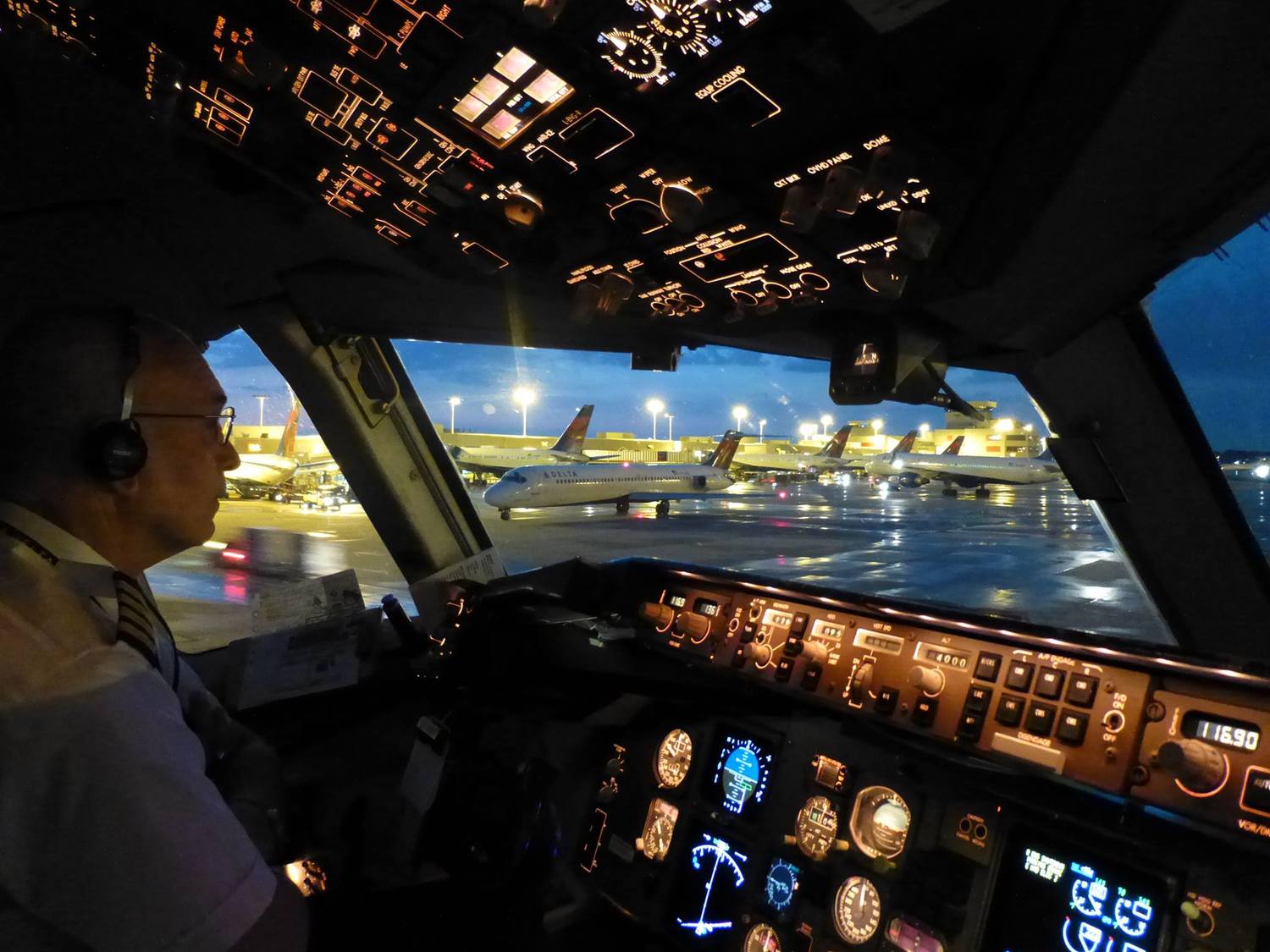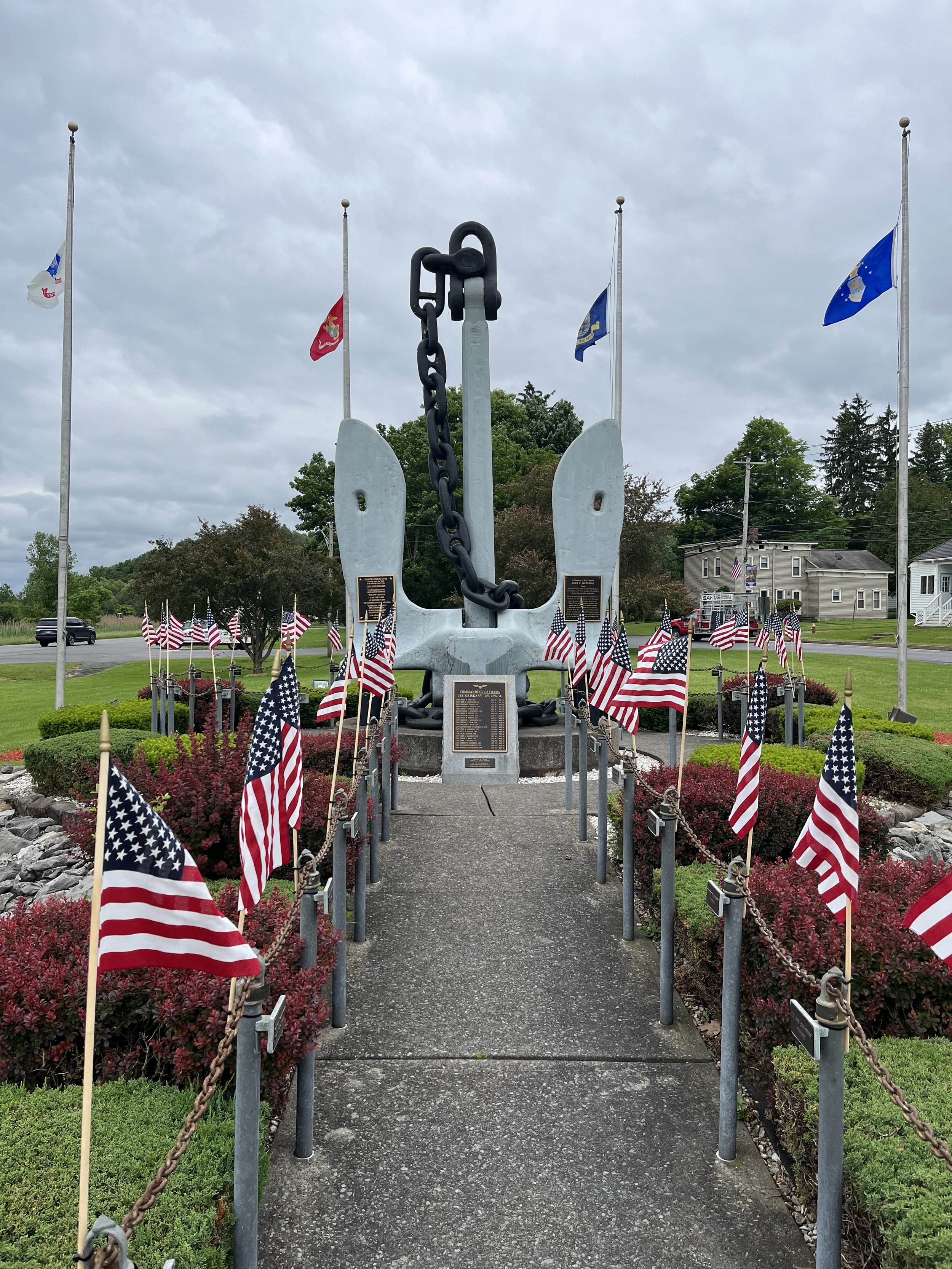Spins
/My aviation career began with Navy primary flight training in 1973. After a couple weeks of ground school, we SNAs (student naval aviators) strapped into the reciprocating-engine powered T34B - a tandem seat derivative of the Beechcraft Bonanza. The aircraft was pretty basic: retractable gear and flaps, a UHF radio, ADF, and limited (if any) instrumentation for IFR flight.
My instructors were either my age or older guys who’d just returned from the Vietnam War. Most all were great sticks and fine instructors – as the saying goes: firm, but fair.
One of the earliest maneuvers that I was introduced to, even before landing practice, was how to recover from a spin. Yes, it was scary for someone with no previous flight experience. My instructors had me demonstrate several spins and stall recoveries before I was released for solo. On that thrilling initial solo, one of the first things I did was climb to altitude, make a clearing turn, then perform a deliberate spin and recovery. It was a huge confidence builder knowing that if I screwed up and somehow got myself into an unintentional spin, I would know how to get out of it before planting myself into the ground.
I’m confident that SNAs still learn how to recover from a spin, but here’s my question: Are civilian student pilots required to demonstrate recovery from a spin? Let me know your thoughts.
Remembering Mighty O.
/
My day started with a scenic drive to the Central New York village of Oriskany, home to a museum that honors the aircraft carrier, USS Oriskany (CV/CVA-34). After that I went to an iconic place for lunch.
The museum is located in the heart of rural New York State, 6 miles from exit 32 along the New York State Thruway (I-90). In addition to a visitor center, the museum includes an outdoor memorial with ship’s bell and anchor, plus an A4 Skyhawk jet. Check the museum’s website for operating hours.
Snapshot of Oriskany’s namesake:
USS Oriskany derived its name from the Battle of Oriskany, fought on August 6, 1777. The engagement is considered one of the bloodiest of the Revolutionary War. On a personal note, I grew up just a few miles from Oriskany, but as a youngster I had a limited knowledge of the battle’s significance or of the decorated warship that carried its name. Researching this article changed that.
Some notable milestones in the ship’s history:
Oriskany was first assigned the designation of CV-18 in 1940, however, USS Wasp was subsequently given that hull number. The keel for CV-34 was eventually laid in 1944 at the New York City Shipyard, followed by the ship’s commissioning in 1950. “Mighty O” was chosen as the carrier’s nickname. After workups in the Atlantic Ocean and Mediterranean Sea, Oriskany became the first American aircraft carrier to sail around Cape Horn while enroute to her homeport of San Diego, California. Oriskany soon joined the Korean War effort, conducting combat missions with F-9 Panther jets, piston-engine F-4 Corsairs and A-1 Skyraiders, and Sikorsky HO3S helicopters. Following the Korean conflict the ship underwent several modifications. The most significant upgrade occurred during a 26 month overhaul in San Francisco where the ship’s straight flight deck was reconfigured to the familiar “angled deck” now associated with modern American aircraft carriers.
The ship continued its advancement into the jet age by boarding A-4 Skyhawks and F-8 Crusaders, plus UH-2A Sea Sprite helicopters. In the mid-1960s Oriskany deployed to the South China Sea to conduct interdiction flights over North Vietnamese targets and Viet Cong forces. Oriskany launched a record number of sorties between May and December 1965. But the heroic feat came with a cost as 22 planes were lost; 6 flight crew members were killed and another 6 men were captured by the North Vietnamese. The Southeast Asia campaign was also marred by a horrific fire in 1966 when a mishandled parachute flare ignited below deck, causing 700 additional flares to erupt. Fire spread throughout berthing compartments and the hangar bay resulting in the death of 43 personnel and injury to another 38. Several aircraft were destroyed by the blaze.
After receiving extensive repairs, the ship returned to service in June of 1967 and was fitted to support A-7 Corsair II attack jets in 1970. The Vietnam War continued until the Paris Peace Accord was signed on January 27,1973. Oriskany's aviators finished up their last strikes over South Vietnam that same day. AmongOriskany ‘s pilots shot down during the eight year conflict were future Vice Admiral and Medal of Honor recipient James Stockdale, and future U.S. Senator John McCain. Both men were held captive for several years in North Vietnamese POW camps.
Oriskany operated in the Pacific theater and Indian Ocean until it was tapped for inactivation on April 15, 1976. “Mighty O” was later towed to Bremerton, Washington where the old carrier remained in reserve until struck from the Navy list on July 25,1989. After the hulk was ordered scrapped, it was towed to the Gulf Coast where it was sunk as an artificial reef off Pensacola, Florida on May 17, 2006.
For an extensive history of Oriskany and for more information about the museum, please visit:
https://www.history.navy.mil/research/histories/ship-histories/danfs/o/oriskany.html
https://www.oriskanymuseum.com
Oh, wait…so what about lunch? I recommend Voss Bar B-Q, a popular roadside joint 4 miles from the museum on Route 5A. It’s been a local favorite since 1938 and specializes in hotdogs, ice cream, and its own unique version of barbeque sandwiches. (Voss is closed during winter and is cash only). You’ll know you’re getting close when you spot the giant milk bottle atop the building!
Neat 4 minute video as the Philippines beefs up its air defenses again China.
/https://youtu.be/SxLcVK9Ru8M
⭐ ⭐ ⭐ ⭐ ⭐ Acts of Deception has received 5-star reviews on Amazon
/"Larry Carello has written another novel that is a thrill ride…Set in the South China Sea, his book is prescient regarding the potential for conflict in this contentious body of water, a flash point that could lead to World War III between the U.S. and China."
George Galdorisi, NYT Best Selling Author
"Carello's experience as a naval aviator, coupled with his storytelling acumen, brings tantalizing realism to fantastic drama."
Kevin McDonald, author of “A Nation Interrupted.”
N.A. S. Jacksonville Air Museum
/It started out as a shopping spree at the Navy Exchange; it ended with a fun tour of the Aviation Museum at Naval Air Station Jacksonville. If in Northeast Florida, I highly recommend that you visit this great display of aircraft, including the jet/prop P-2, F-14, A-7 and H-60 among several others. The self-guided tour is free.
My latest novel - Acts of Deception
/I’m pleased to announce the release of my latest military thriller, “Acts of Deception,” the story of a Chinese fighter jet that disappears over the Pacific as U.S. and Chinese forces race to recover it.
MQ8-C struggles to maintain its position in Navy's UAV fleet
/While defense programs come on the chopping block the MQ8 Fire Scout continues to demonstrate its effectiveness as an Unmanned Aerial Vehicle. Follow this link for more on the subject:
Was Howard Hughes' Spruce Goose ahead of its time?
/The Defense Advanced ResearchProjects Agency (DARPA) is developing a seaborne strategic and tactical aircraft. Is this project feasible or another government boondoggle? Follow this link for an interesting video: Liberty Lifter
Marines Revise Drone Strategy
/In a move that’s bound to tank some flying jobs, the Marine Corps is going “gung-ho” for drones.
Where were you on July 20, 1969?
/For those old enough to remember, July 20, 1969 marked a tremendous achievement not just for America, but also for the entire world.
On July 16th the Apollo 11 rocket—with astronauts Neil Armstrong, Buzz Aldrin and Michael Collins on board—blasted off from Cape Canaveral, Florida. On July 20th their capsule circled the Moon as Armstrong and Aldrin deployed to the lunar surface aboard a separate craft, while Collins remained in orbit aboard the “mother ship.” After spending over twenty hours on the Moon, the pair rendezvoused with Collins and began their flight back to earth. They splashed down in the Pacific Ocean on July 24th.
Scores of books, films, and first-hand accounts have documented Apollo 11 and the five other manned lunar missions that followed. Ironically, despite overwhelming evidence to the contrary, doubters and conspiracy buffs have concocted wild tales that the entire project was staged by the government in a movie studio and never really happened! Go figure…
Where was I on July 20, 1969? I was a 17 year-old Plebe Midshipman, three weeks into summer training at the Naval Academy. While our company crowded around a tiny black-and-white TV set in the Academy’s bowling alley, we watched Neil Armstrong step onto the Moon’s surface and declare, “That’s one small step for man. One giant leap for mankind.”
Are pilots going the way of the dodo bird?
/Will there be a time when pilots are no longer needed? The notion may sound farfetched, but think about it for a moment.
Remotely controlled aircraft have been with us for many years, and as one might expect, the military has led the way. The Air Force’s MQ-1 Predator and MQ-9 Reaper have proven their worth as lethal weapons platforms in the Middle East and Afghanistan. Likewise, the Navy now deploys its own autonomous vehicles—the MQ-8 Fire Scout helicopter and the MQ-4C Triton fixed-wing drone. Most recently, there’s news that the Army has shown interest in using a dual-rotor drone, the DP-14, for casualty evacuation. There’ve been some failures (note the MQ-4C crash in September 2018), but overall, these pilot-free machines continue to show amazing capabilities.
On the civilian side, I predict that we’ll see pilotless cargo jets flying within a decade—first on oceanic routes, and then domestically as well. As for fully autonomous passenger planes…maybe that’s a stretch. I can’t help thinking, however, that more than a few airline executives have mulled over the cost savings of eliminating pilots.
Classic Rotors Ramona, CA
/Looking for a nice daytrip while in San Diego? Take the scenic 45-minute drive to the “Classic Rotors” aviation museum in Ramona. You won’t be disappointed.
Located on Montecito Road on the north side of Ramona Airport, you’ll find a huge collection of fascinating military and civilian rotary aircraft. Admission is free, but after viewing the museum’s impressive collection you will probably want to make a donation.
Visit their website at www.rotors.org. Be sure to note days and hours when the museum is open to the public.
On a personal note: While in Ramona check out the “Marinade on Main” restaurant. Connie and I have eaten there several times and have always enjoyed the food.
Aviation thoughts: Fixed-Wing or Rotary?
/
The U.S. Navy trained me to fly both fixed-wing and rotary aircraft. Had I not been granted the privilege of attending the Naval Academy and subsequently become an aviator, I would have likely been an education major in college, taught social studies and coached high school football. Teaching and coaching are certainly noble professions, yet my life would have been totally different had I not been a naval officer and professional pilot.
Over the years some folks have asked me what type aircraft is the hardest to fly: fixed-wing or rotary? I always qualify my answer by establishing that I’ve never flown in combat, and never had the opportunity to land a plane aboard ship—though I’ve accomplished that task scores of times in a helicopter. As for what aviators call the “stick and rudder” skills needed to operate a flying machine, I’d have to say that piloting a helicopter is more of a challenge, and definitely harder to master as a novice pilot. Unlike fixed-wing, helicopters are inherently unstable, and manually hovering a helicopter is comparable to balancing one’s self on a bowling ball while juggling. With that in mind, landing a helo on the rolling, pitching deck of a small ship during a storm at night is guaranteed to raise any pilot’s heart rate!
But flying an airplane presents its own unique set of demands, particularly when operating in high altitude, transoceanic, or all-weather environments. Pre-flight planning becomes more critical when considering jet stream winds, forecast turbulence, icing and thunderstorms. Normally, a helicopter crew can plan their mission to avoid such factors.
In conclusion, I’ll say that both fixed-wing and rotary aircraft have undergone huge technical advancements since the era when I learned to fly. Computers, digital instrumentation, and more reliable turbine engines have made aviation a much safer endeavor. As I observe the newest aircraft being developed, I’m envious of the young men and women who will fly them.
Blue skies!
When fiction gets too close to the truth
/It’s been said that good fiction should be believable, otherwise the story will come across as just fantasy.
With the above in mind, I’ve sometimes found it challenging to script characters and scenes that are convincing, yet not overly influenced by actual persons or events. It’s a different matter when referring to historical persons or happenings by name. Most readers easily understand that these are real people and occurrences, and not the author’s imagination. Provided the references are accurate, these “doses” of non-fiction can add depth and granularity to a story. James Michener mastered this style of writing by injecting historical facts and mentioning actual persons in his books. Good examples of Michener’s technique can be found in novels like Texas and Centennial.
But fiction has the potential of rubbing against the truth, and that may provoke unintended reactions or even offend. I discovered this with my first novel, A Golden Weekend, which like many authors’ initial efforts, was somewhat autobiographical. More than a few folks confronted me and said in effect, “You can’t fool me; I know who so-and-so actually is in the story!” I received similar feedback with Rotorboys—an action adventure based loosely on my experiences flying helicopters in the Western Pacific. Some Navy friends were sure that I’d formed characters in the image of familiar people, and modeled scenes on real events.
So how can an author write believable fiction without crossing the line, or worse yet, offending someone? My only guidance is to tread lightly when reflecting on real people or actual events while developing a story. In the end though, perception is reality for some readers and you can’t please everyone. Just saying…
Verbal Orders review...
/Naval Helicopter Association magazine recently reviewed my novel.





















